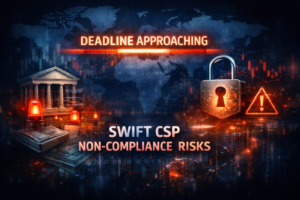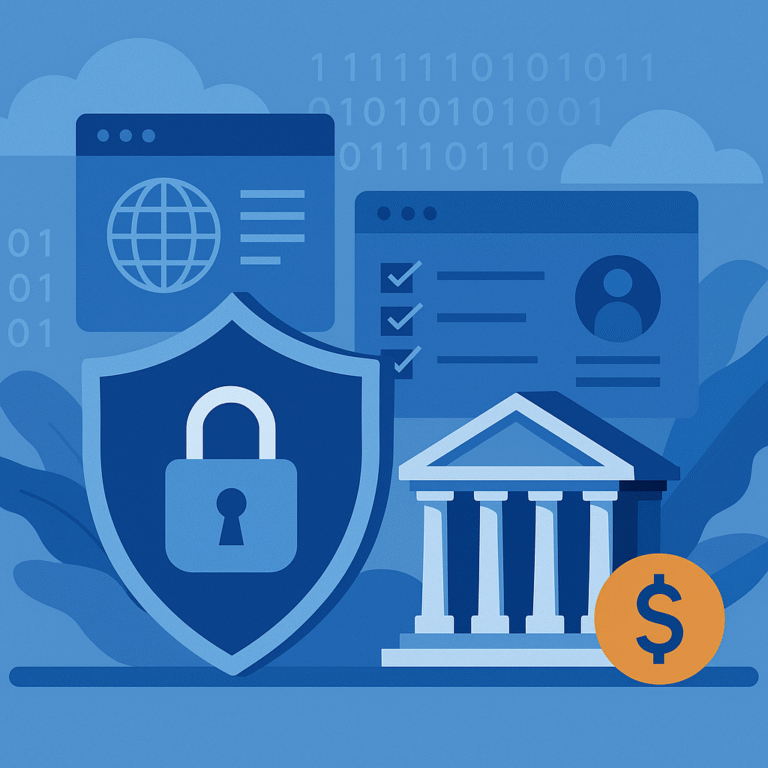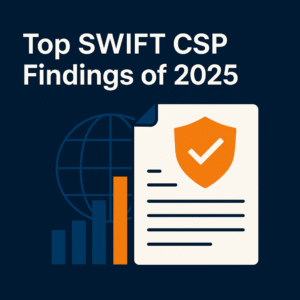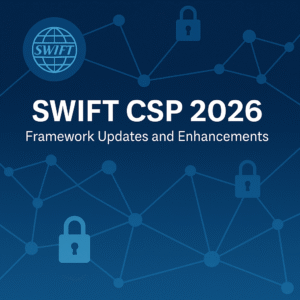
SWIFT CSP 2025: What Financial Institutions Must Know

In the fast-evolving world of financial services, cybersecurity is no longer a support function. It is a strategic imperative. As digital transactions become more complex and cyber threats more sophisticated, the SWIFT network remains at the center of global financial communication. To maintain trust and integrity across this critical infrastructure, the SWIFT Customer Security Programme (CSP) is entering a new phase in 2025, one that demands more from every connected institution.
The SWIFT CSP 2025 update introduces stricter expectations, enhanced clarity around control implementation, and a greater emphasis on accountability. For financial institutions, this means a clear shift from optional best practices to enforced security baselines. Understanding and preparing for these changes is essential, not only for SWIFT compliance but also for protecting the broader financial ecosystem.
Previously, institutions were allowed to submit a self-attestation to confirm their compliance with the SWIFT security framework. That model is now being replaced with third-party verification. Every SWIFT-connected entity must have its controls evaluated and validated by a qualified, independent assessor. This move is designed to improve the credibility and consistency of compliance reports while reinforcing the importance of defensible, well-documented cybersecurity practices.
Another major update involves refinements to the existing security controls. SWIFT has clarified definitions and scope boundaries, particularly around access management, system segmentation, and logging practices. These changes are not superficial. They may require financial institutions to re-evaluate how they’ve implemented security controls in their SWIFT environments. For instance, systems that were once considered out of scope may now fall within it. Similarly, authentication methods that previously passed internal scrutiny may need upgrades to meet new expectations.
These developments come at a time when financial data protection is more critical than ever. Institutions are expected to demonstrate not just technical readiness, but also operational maturity. This includes having up-to-date documentation, structured incident response plans, and continuous monitoring of SWIFT-related infrastructure. A compliance-focused mindset is no longer enough. SWIFT CSP 2025 rewards those who embed security into everyday operations and treat the program as a foundation for long-term resilience.
Getting ready for these changes is not something that should be left to the final quarter of the year. Financial institutions should begin by conducting a comprehensive gap analysis against the revised CSP controls. Identifying gaps early will help organizations prioritize remediation efforts and avoid last-minute scrambles. It is also important to identify and engage a qualified assessor in advance. Working with an experienced partner can streamline the validation process and clarify exactly what evidence is needed to demonstrate compliance.
SWIFT CSP 2025 is not simply an update. It is a signal that cybersecurity expectations across the financial sector are rising. Institutions that act early, take the changes seriously, and view the CSP as a strategic framework rather than a regulatory obligation will be far better positioned to protect their operations, their customers, and their reputation.
Key takeaways
- SWIFT compliance in 2025 will require an independent assessment. Self-attestation will no longer be accepted.
- Control definitions have been clarified. Financial institutions must re-examine their SWIFT environments to ensure accurate scoping and implementation.
- Strong documentation and audit-ready evidence are essential. Compliance will depend on the ability to demonstrate real-world control effectiveness.
- SWIFT CSP 2025 supports stronger financial data protection by embedding cybersecurity into daily operations.
- Early preparation will ease the transition and reduce risk. Institutions that begin now will benefit from smoother assessments and stronger security posture.

About World Informatix Cyber Security
World Informatix Cyber Security (WICS) has helped financial institutions of all sizes – from small regional banks to Central Banks and the United Nations, navigate the SWIFT Customer Security Programme since 2016.
As one of the original CSP assessors and the lead incident response from the largest SWIFT attack at the Central Bank of Bangladesh in 2016, our experience provides a comprehensive and holistic approach to security the SWIFT payment system.




